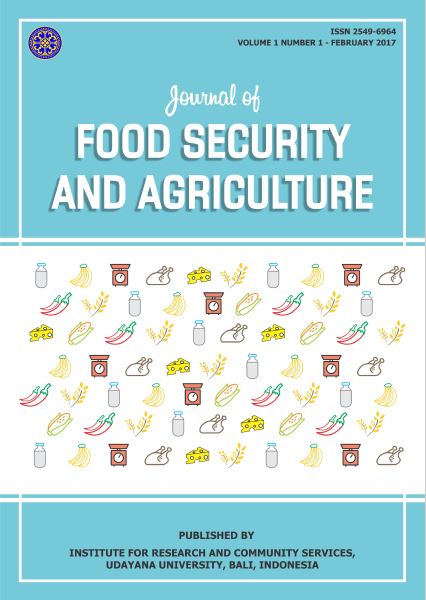The Application of Taro’s Starch which Modified by Autoclaving-Cooling on Dry Noodles
Abstract
Processing the cocoyam (taro) into starch is a way to increase its added value, then followed by modification of the
starch by autoclaving-cooling method which resulting in a good characteristic of the starch which suitable to apply for food
product such as dry noodles. Modified starch is commonly used to increase the quality and functional value of a certain food
product in food industry.
In this study, the first step experiment was starch extraction from taro as a preparation for modification step. The second step,
taro’s starch was modified by two-cycle autoclaving-cooling method. The third step was formulation of modified taro’s starch for
dry noodle production. The formula of modified taro’s starch and taro’s flour were 0:100% (T0); 5:95% (T1); 10:90% (T2);
15:85% (T3); and 20:80% (T4). All treatments were repeated three times which resulting in 15 experiment units.
The results indicated that the best formula of modified taro’s starch and taro’s flour was 15:85% (T3) which having characteristic
of color’s scores L=66.33; a*=6.61; b*=6.34, physical characteristic such as texture = 6.95N; tensile strength = 0.016 Mpa;
elongation = 22.34% and functional characteristic such as water absorption = 85%; loss of solidity causing by cooking process
(LSCP) = 12.26%.






